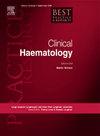Creating a GMP cell processing program: A focus on quality and regulation
IF 2
4区 医学
Q3 HEMATOLOGY
引用次数: 0
Abstract
Implementing current Good Manufacturing Practice (GMP) regulations and principles even in early phases of cell-based therapy studies is crucial for ensuring safety and reproducible quality of these products. This paper outlines the comprehensive steps necessary to establish a robust GMP-compliant cell processing program in academic programs with emphases on adherence to regulatory and quality standards. While there are different regulatory agencies governing practice across the globe, the prevailing quality principles described here incorporate common requirements and guidelines from agencies such as the United States Food and Drug Administration (FDA) and the European Medicines Agency (EMA). The goal of this review is to provide guidance for developing a quality management program (QMP) that addresses all critical factors impacting each step in the cell therapy product lifecycle: from procurement and receipt of starter material, through manufacturing, testing, storage, distribution, and administration. The QMP should be designed to assure quality outcomes by maintaining qualified and trained staff at all levels as applicable to their job functions; establishing clear policies and procedures; ensuring the qualification of facilities and equipment; using qualified materials for human use; and providing a framework for detection of trends and implementing process improvement.
创建GMP细胞加工程序:注重质量和监管
即使在细胞疗法研究的早期阶段,实施现行的良好生产规范(GMP)法规和原则对于确保这些产品的安全性和可重复性质量至关重要。本文概述了在学术课程中建立一个强大的符合gmp的细胞处理程序所必需的综合步骤,重点是遵守法规和质量标准。虽然全球有不同的监管机构管理实践,但这里描述的流行质量原则包含了来自美国食品和药物管理局(FDA)和欧洲药品管理局(EMA)等机构的共同要求和指导方针。本综述的目的是为制定质量管理计划(QMP)提供指导,该计划解决影响细胞治疗产品生命周期中每个步骤的所有关键因素:从起始材料的采购和接收,到生产、测试、储存、分销和管理。质量管理方案的设计应确保通过在各级维持符合其工作职能的合格和训练有素的工作人员来确保质量结果;制定明确的政策和程序;确保设施设备的合格性;使用合格的材料供人使用;并为趋势检测和实施过程改进提供了一个框架。
本文章由计算机程序翻译,如有差异,请以英文原文为准。
求助全文
约1分钟内获得全文
求助全文
来源期刊
CiteScore
4.20
自引率
0.00%
发文量
42
审稿时长
35 days
期刊介绍:
Best Practice & Research Clinical Haematology publishes review articles integrating the results from the latest original research articles into practical, evidence-based review articles. These articles seek to address the key clinical issues of diagnosis, treatment and patient management. Each issue follows a problem-orientated approach which focuses on the key questions to be addressed, clearly defining what is known and not known, covering the spectrum of clinical and laboratory haematological practice and research. Although most reviews are invited, the Editor welcomes suggestions from potential authors.

 求助内容:
求助内容: 应助结果提醒方式:
应助结果提醒方式:


